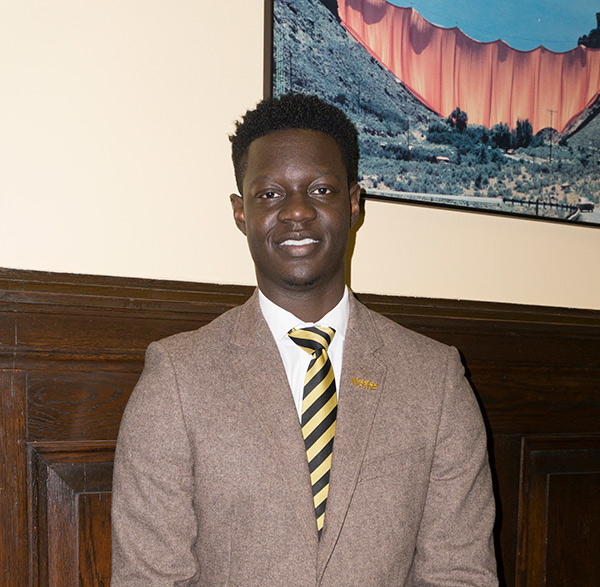Energy Transfer: Edmund Adjapong (Ph.D., Science Education)

“Science is a really Eurocentric discipline — there are not many people of color and not many women,” says Adjapong, who is receiving his Ph.D. in Science Education this spring. “So as a child I never really identified as a scientist, even though my mother’s a nurse, because I never really saw pictures that reflected who I was.”
It didn’t help when a middle school instructor shot down Adjapong’s science project on the transformation of caterpillars to butterflies because it lacked a control. But everything changed in ninth grade, when Christopher Emdin, Adjapong’s Conceptual Physics teacher at Marie Curie High School for Medicine, Nursing and Health Professions, began engaging his students through hip hop.
“We were talking about pendulums and kinetic and potential energy,” Adjapong recalls. “And so, for example, instead of looking at a grandfather clock, which is what students would traditionally observe, Dr. Emdin would have us look at the chain and medallion on a rapper’s neck.”
“I make connections between the five elements of hip hop and what I do in my classroom.”
Adjapong decided then and there to be a scientist, and as a college freshman declared himself a biochemistry major, with the goal of becoming a pharmacist. But the teaching was so poor that “I found myself thinking about all the students who were in the position I was in middle and high school. I was already tutoring students in my old high school, and I said, I want to be a teacher.”
Adjapong applied and was accepted to several graduate teaching programs, but two things decided him on enrolling at TC: the presence of Emdin, who had since joined the faculty, and the College’s Peter Greeman Scholarship, which enabled him to afford tuition. He earned his master’s degree in 2014 and then stayed on to complete a doctorate in record time. Along the way he conducted research on Science Genius, a competition created by Emdin and hip-hop icon GZA, in which students at New York City high schools compose poetically sophisticated and scientifically rigorous raps. He coordinated the expansion of Science Genius to Canada and Jamaica. He also wrote his dissertation on bringing specific hip-hop practices into the classroom — something that, as a sixth-grade science teacher in his old neighborhood in the Bronx, he has ample opportunity to do.
“I make connections between the five elements of hip hop and what I do in my classroom,” he explains. “I use visual arts in the science classroom because science is very conceptual, and students oftentimes can’t really think about and visualize these concepts. So when my students can’t verbalize what we’re trying to learn, I create these opportunities for them to draw it out and connect their drawings to their lived experiences. So, take the transfer of the law of conservation of energy. One of my students drew a picture of herself curling her hair. And she made the connection to the law of conservation of energy because of how she had to plug the curling iron into the wall, which allowed the curling iron to gain electrical energy and become hot. That’s energy transfer.
“I want to encourage the next generation of students – students of color and students from my actual community – to become scientists,” he says. “Because they can. They just don’t know that they can.” – Joe Levine
Published Monday, May 15, 2017